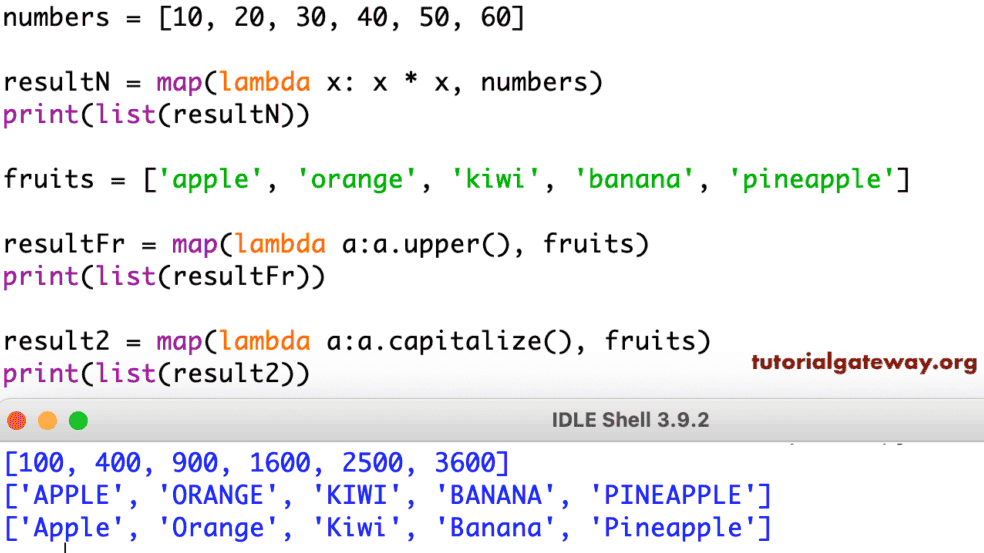

Furthermore, when we need to pass another piece of data to the function that you’re applying to your iterable, user-defined functions can be a better choice for readability.įor example, in the following iterable, each item is a dictionary that contains different details about each of our aquarium creatures: aquarium_creatures = While lambda functions are more useful to implement when you’re working with a one-line expression, user-defined functions are more appropriate when the expression grows in complexity. Similarly to a lambda we can use a function we have defined to apply to an iterable. Ultimately map() is most useful when working with large datasets, so we would likely work with the map object further, and generally would not be using a constructor like list() on them.įor smaller datasets, list comprehensions may be more suitable, but for the purposes of this tutorial we’re using a small dataset to demonstrate map(). We’re doing this here because it’s a good way to review the results.

The map object is an iterator over our results, so we could loop over it with for or we can use list() to turn it into a list. We have used list() so that the map object is returned to us as a list, rather than a less human-readable object like. In order to receive the results of this immediately we print a list of the map object: print (mapped_numbers ) We pass in our list of numbers as the iterable for map(). Here we declare an item in our list as x. To apply an expression against each of our numbers, we can use map() and lambda: mapped_numbers = list ( map ( lambda x : x * 2 + 3, numbers ) ) With a list like the following, we can implement a lambda function with an expression that we want to apply to each item in our list: numbers =

The syntax of map() with a lambda function is as follows: map ( lambda item : item expression, iterable ) For the first function argument, we can either pass a user-defined function or we can make use of lambda functions, particularly when the expression is less complex. Python calls the function once for every item in the iterable we pass into map() and it returns the manipulated item within a map object. The first argument to map() is a function, which we use to apply to each item. In this tutorial, we’ll review three different ways of working with map(): with a lambda function, with a user-defined function, and finally with a built-in function using multiple iterable arguments. map() can also take multiple iterables as arguments to the function by sending one item from each iterable to the function at a time. This is particularly useful when working on programs processing large data sets. Therefore it can often be more performant since it is only applying the function one item at a time rather than making copies of the items into another iterable. Instead of using a for loop, the map() function provides a way of applying a function to every item in an iterable. The syntax for the map() function is as follows: map (function, iterable, ) We can also pass the map object to the list() function, or another sequence type, to create an iterable. map() returns a map object (an iterator), which we can use in other parts of our program. We can use the Python built-in function map() to apply a function to each item in an iterable (like a list or dictionary) and return a new iterator for retrieving the results.


 0 kommentar(er)
0 kommentar(er)
